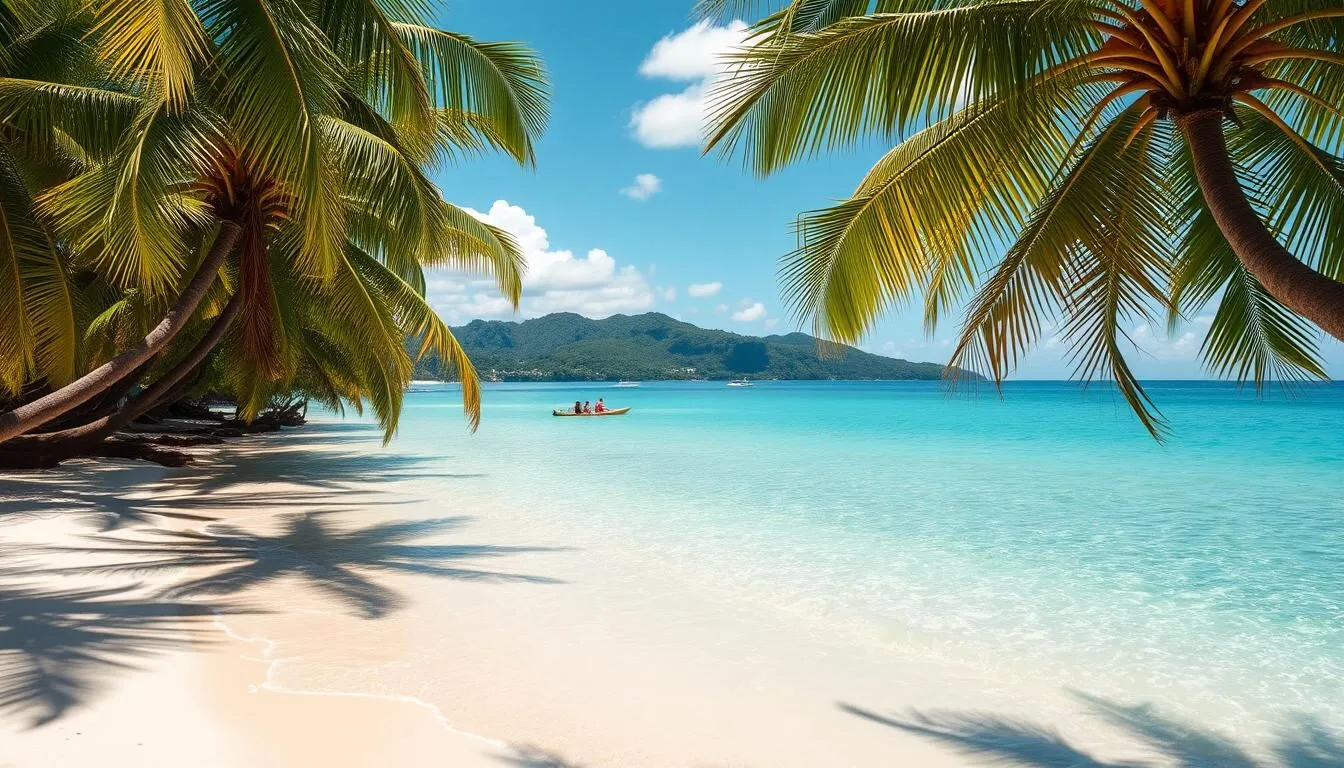Imagine yourself on a serene beach at sunset, surrounded by crystal-clear waters and lush greenery. This is what awaits you on Panay, a hidden gem in the Philippines.
As you explore this enchanting island, you’ll discover a perfect blend of natural attractions and cultural experiences. From the vibrant city life in Iloilo to the pristine beaches and island hopping spots in Islas de Gigantes, Panay has something for every kind of traveler.
Whether you’re looking for adventure, relaxation, or cultural immersion, you can customize your tour to suit your interests. With its rich history, delicious cuisine, and warm hospitality, Panay is an ideal destination for your next trip.
Discovering the Charm of Panay Island
Panay Island, a gem in the Western Visayas region, offers travelers a unique blend of vibrant city life and serene escapes. As you explore this enchanting island, you’ll discover a rich tapestry of cultural heritage, historical landmarks, and breathtaking natural beauty.
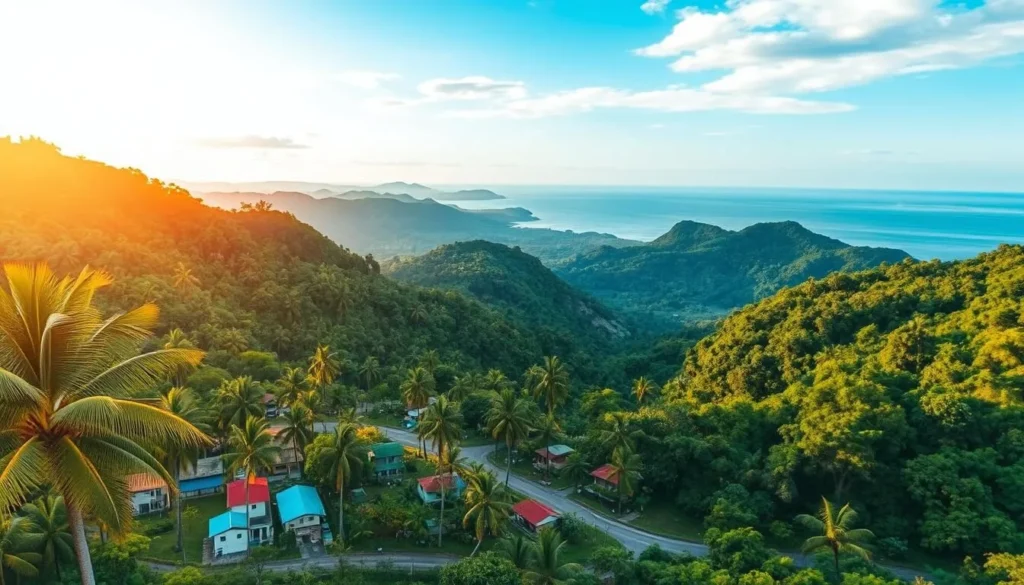
Geography and Location of Panay Island
Panay Island is strategically located in the Western Visayas region of the Philippines, making it an accessible destination from major cities like Manila and Cebu. The island is divided into four provinces: Iloilo, Capiz, Antique, and Aklan, each offering its own unique attractions and cultural experiences.
The geography of Panay Island is incredibly diverse, featuring everything from pristine beaches and crystal-clear waters to rolling hills and mountain ranges. Iloilo City serves as the main gateway to Panay Island, with its international airport connecting travelers to various parts of the Philippines and some international destinations.
| Province | Main Attractions | Cultural Experiences |
|---|---|---|
| Iloilo | Beaches, Historic Landmarks | Festivals, Local Cuisine |
| Capiz | Sandbars, Lagoons | Traditional Fishing Villages |
| Antique | Mountains, Waterfalls | Indigenous Cultures |
| Aklan | Boracay Island, Beaches | Vibrant Nightlife |
As you explore Panay Island, you’ll find that the island’s strategic location makes it a perfect base for exploring the Western Visayas region. The island’s coastal areas are dotted with fishing villages where you can observe traditional ways of life that have remained largely unchanged for generations.
Panay’s development has been thoughtful, balancing tourism infrastructure with preservation of natural resources and cultural heritage. Many tourists are surprised by the variety of landscapes they can experience in a single day on Panay Island. The island is also known for its rich food culture, which has been influenced by its geography and access to fresh seafood and agricultural products.
Morning explorations are particularly rewarding, as you can witness locals going about their daily routines and experience the authentic culture of the island. Whether you’re looking to relax on the beach, explore historical landmarks, or immerse yourself in local culture, Panay Island has something to offer every kind of traveler.
Island Hopping Adventures in Islas de Gigantes
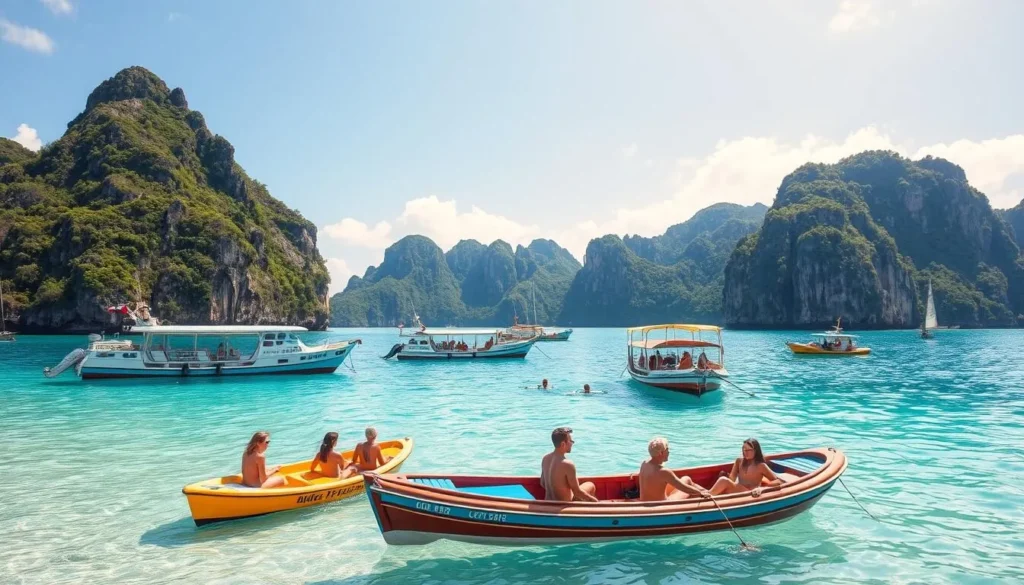
Embark on an unforgettable island-hopping adventure in Islas de Gigantes, a group of islands off the coast of Carles town in northern Iloilo province. Islas de Gigantes, or “Islands of Giants,” is famous for its dramatic limestone formations, secluded beaches, and crystal-clear waters, making it a favorite destination for adventurers and beach lovers alike.
Cabugao Gamay Island: The Iconic Photo Spot
Cabugao Gamay Island is one of the most iconic spots in Islas de Gigantes, often recognized from its countless photos shared on social media. Known for its unique, elongated shape, this picturesque island has two contrasting ends: one covered with lush greenery and the other adorned with rugged rock formations. In between lies a stunning white sandbar, embraced by emerald green waters that invite visitors for a refreshing swim.
You’ll want to climb the viewpoint on Cabugao Gamay to capture the iconic postcard-perfect views that have made this island famous on social media. The experience is truly unforgettable, and you’re likely to have your camera or phone ready to capture every moment.
Bantigue Island and Its Stunning Sandbar
The enchanting Bantigue Island is home to a strikingly long sandbar that changes shape with the shifting tides, creating a surreal landscape. This natural phenomenon makes every visit unique, and you’re sure to be amazed by the beauty of this island.
Antonia Beach: The “Sandwich Island”
At Antonia Beach, nicknamed “The Sandwich Island,” you’ll be amazed by the unique layered rock formations that resemble stacked sandwiches—a perfect place for both photography and relaxation. The distinctive boulders along the shore are a result of layers of erosion, making this beach a must-visit during your island-hopping tour.
Tangke Saltwater Lagoon: A Natural Pool
Tangke Saltwater Lagoon provides one of the most magical swimming experiences, where crystal-clear emerald water is enclosed by towering limestone cliffs, creating a natural swimming pool. Named “Tangke,” meaning “tank,” the lagoon’s shape resembles a natural basin, perfect for a peaceful swim during low tide.
Your island-hopping adventure in Islas de Gigantes will be one of the highlights of your trip to Panay Island, offering some of the most picturesque beaches and unique rock formations in the Philippines. Most tours include fresh seafood lunches featuring the area’s famous scallops, which are abundant in the waters surrounding these islands. The adventure level can be adjusted based on your preferences, with options for snorkeling, cliff jumping, or simply relaxing on pristine beaches.
Exploring Iloilo City’s Historical Churches
The historical churches of Iloilo City are a testament to the region’s rich cultural heritage. Iloilo City is home to some of the most historically significant churches in the Philippines, each with unique architectural features and fascinating stories.
Molo Church: The Female Church

Molo Church, known as the “female church,” will captivate you with its Gothic-inspired design and remarkable collection of female saint statues that line its interior. Dating back to 1831, this Catholic church along San Pedro Street in Iloilo City showcases Gothic architecture, with its walls made of white coral rock.
The church’s walls, constructed from white coral rock, have stood the test of time since 1831, making it a must-visit historical site during your day in Iloilo City. Just a short walk from Molo Church is Molo Plaza, where you can continue your historical tour by admiring the statues of Greek goddesses that create an interesting cultural fusion.
Jaro Cathedral and Bell Tower
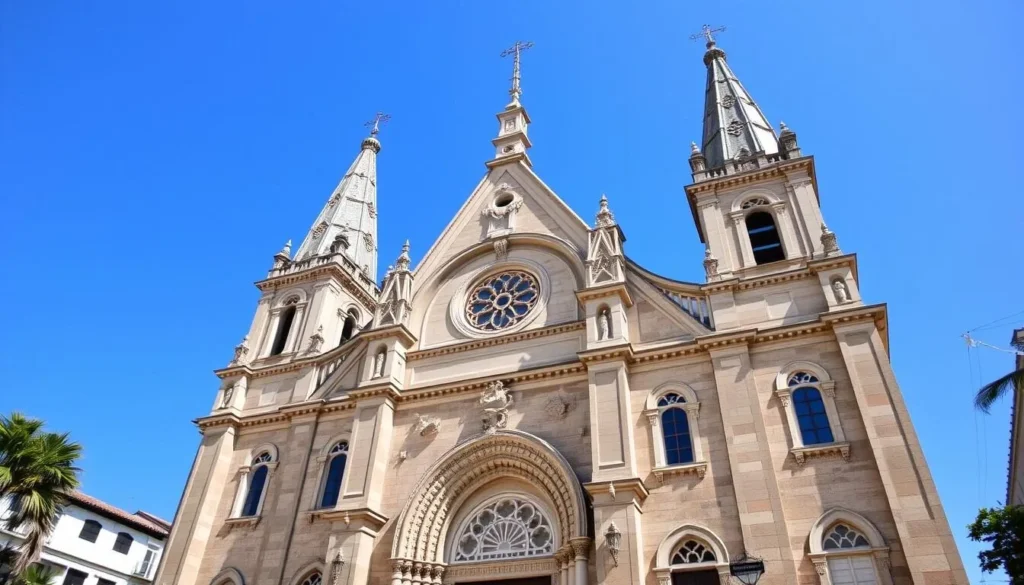
Jaro Cathedral offers a contrasting experience as the “male church,” featuring statues of male saints and a separate bell tower that stands across the street—an unusual architectural arrangement. The cathedral’s 400-year-old statue of the Mother and Child is believed by many to be miraculous, drawing pilgrims from across the Philippines to this sacred place.
Established as a small parish in 1587, Jaro Cathedral evolved into a cathedral and is now a national shrine for the Roman Catholic Archdiocese of Jaro. After an earthquake destroyed the original structure in 1948, it was rebuilt in 1956 and declared a historical landmark in 1976.
Miagao Church: A UNESCO World Heritage Site
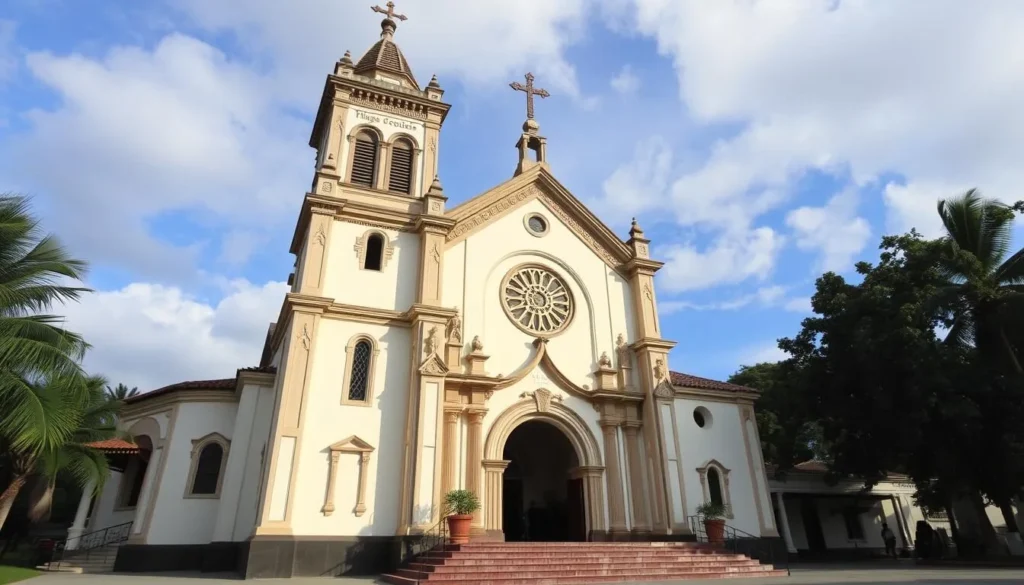
Miagao Church, a UNESCO World Heritage Site, represents the pinnacle of Philippine Baroque architecture, with its impressive façade that blends Spanish, Chinese, and Muslim influences. You’ll be amazed by the intricate carvings on Miagao Church’s façade, which depict St. Christopher carrying the Christ Child amidst local flora like coconut and papaya trees—a beautiful example of how Filipino artisans incorporated local elements into European designs.
Known formally as the Church of Saint Thomas of Villanova, it was completed in 1797 and is now celebrated as one of the finest examples of Baroque-style architecture in the country. The entrance fees for these churches are minimal or free, making them accessible attractions for all travelers interested in history, architecture, or religious heritage.
The cool interiors of these stone churches also provide a welcome respite from the tropical heat, making them perfect tour stops during the hottest part of the day. As you explore these historical churches, you’ll gain a deeper understanding of Iloilo City’s rich cultural heritage and the significance of these landmarks in the region’s history.
Heritage Houses and Cultural Landmarks
Panay Island is home to a rich cultural heritage, with numerous historical houses and landmarks that showcase the island’s history and architectural splendor. As you explore Iloilo City and its surroundings, you’ll discover a treasure trove of heritage houses that offer a glimpse into the lives of the island’s elite during the Spanish and American colonial periods.
Camiña Balay nga Bato: A Step Back in Time
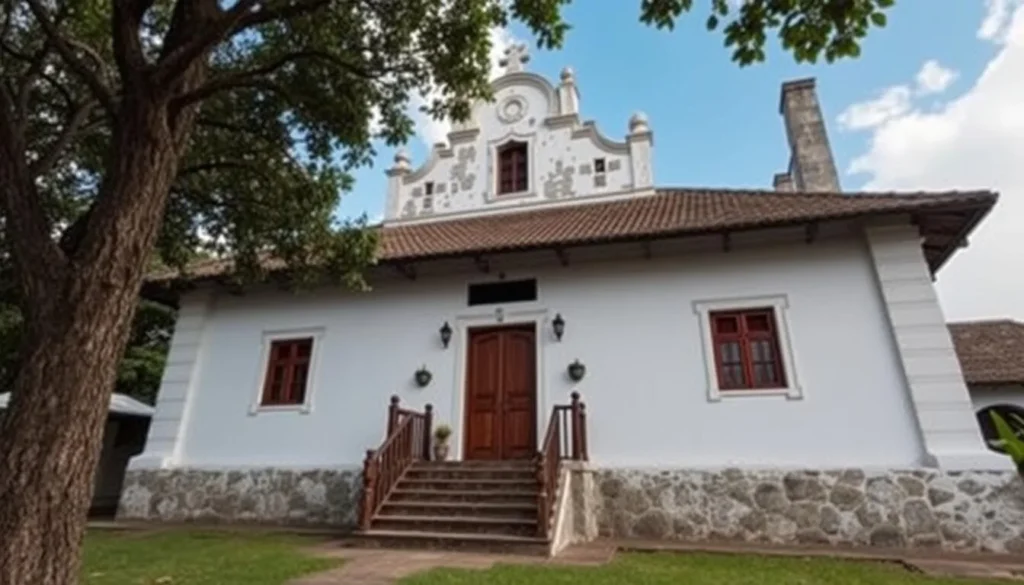
Camiña Balay nga Bato is a 160-year-old ancestral home that has been lovingly preserved by the Melocoton-Avancena family for generations. As you step inside, you’re transported back in time to an era of elegance and refinement. The house is a testament to the island’s rich cultural heritage, with its exquisite Spanish-colonial architecture and rich display of antiques.
Your visit to Camiña Balay nga Bato typically includes a welcome video about the house’s history, followed by a guided tour and a complimentary serving of traditional thick hot chocolate. This authentic cultural experience connects you to the island’s past, making it an essential stop on your trip to Panay Island.
Casa Mariquit: Glimpse into a Political Dynasty
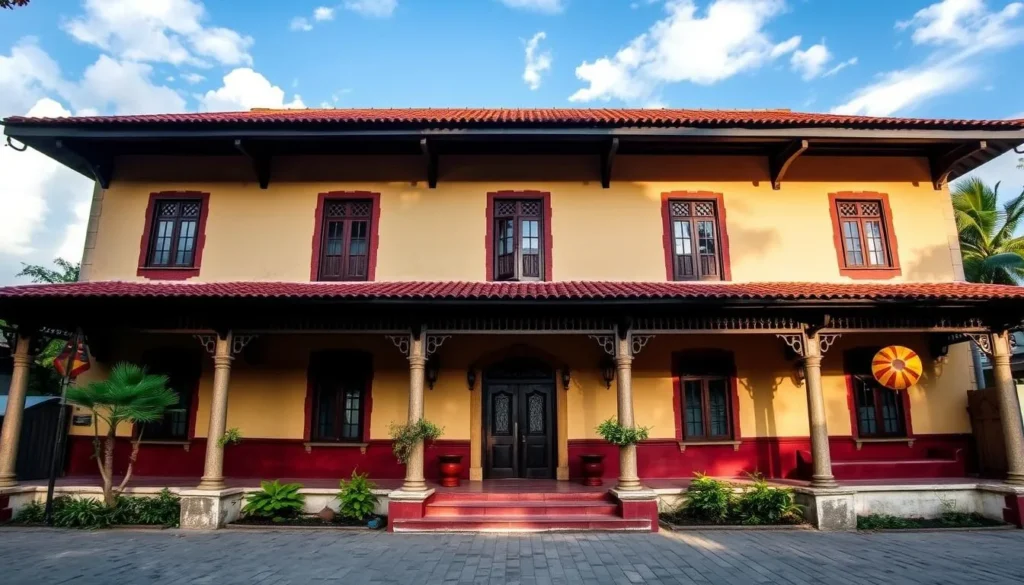
Casa Mariquit is an exquisite heritage house in the district of Jaro in Iloilo City, offering visitors a glimpse into the lives of prominent local families. Built over a century ago, this well-preserved home once belonged to Mariquit Javellana Lopez and her husband, Fernando Lopez Sr., former Vice President of the Philippines.
The house boasts beautiful wooden architecture and original furniture that reveal the elegance of a bygone era. As you explore Casa Mariquit, you’ll gain insight into the political history of the region and the lives of the Lopez family.
Lopez Heritage House (Nelly’s Gardens)
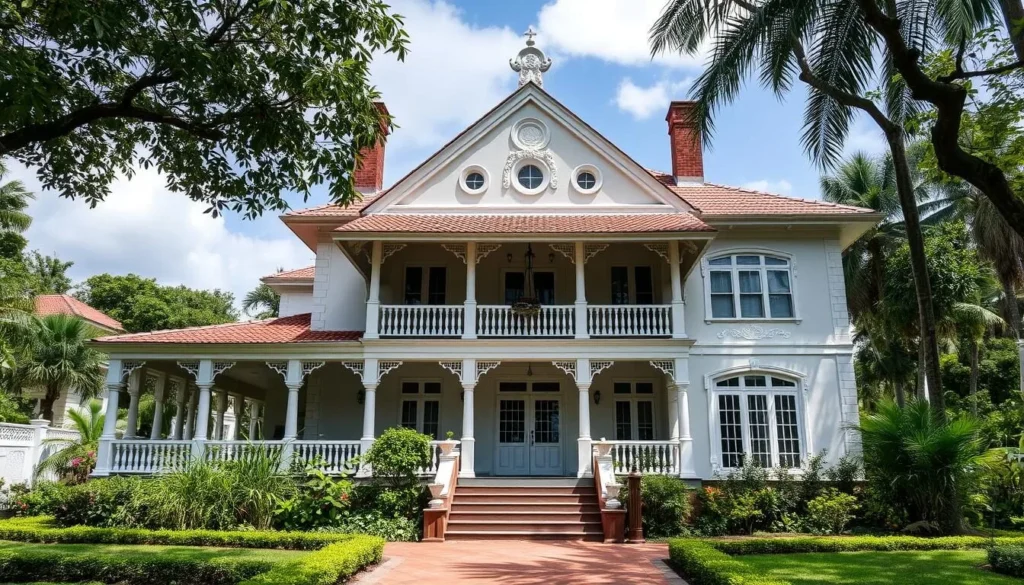
Known as the “Queen of Heritage Houses” in Iloilo City, the Vicente Lopez Heritage House, also called Mansion de Lopez or Nelly’s Gardens, is a grand estate that dates back to 1928. Built for Don Vicente Lopez and Doña Elena Hofileña, the house is named after their eldest daughter, Nelly.
This impressive residence reflects the aristocratic lifestyle of Iloilo City’s elite, with its grand architecture and sprawling gardens designed with an air of opulence and sophistication. Declared a National Historic Landmark, the Lopez Heritage House is a popular stop for history enthusiasts and architectural aficionados.
Visiting these heritage houses is not just about admiring their beauty; it’s also about understanding the cultural and historical context in which they were built. Each house tells a unique story about Panay Island’s development during different historical periods, making them essential destinations for anyone interested in Philippine history.
As you explore these cultural landmarks, you’ll be struck by the rich cultural heritage of Panay Island and the importance of preserving these historical houses for future generations. The entrance fees for these heritage houses contribute directly to their preservation, ensuring that they remain intact for years to come.
Culinary Delights of Panay Island
When visiting Panay Island, you’ll discover a world of flavors that showcase the island’s unique culinary identity. The island’s cuisine is a reflection of its rich cultural heritage, with a blend of traditional and modern flavors.
La Paz Batchoy: Iloilo’s Famous Noodle Soup
La Paz Batchoy, a hearty noodle soup that originated in Iloilo City’s La Paz district, will delight your taste buds with its rich broth made from pork organs, beef, chicken stock, and topped with crispy pork cracklings. You can experience this iconic dish at its birthplace by visiting famous establishments like Netong’s or Ted’s, where locals have been enjoying this comfort food for generations.
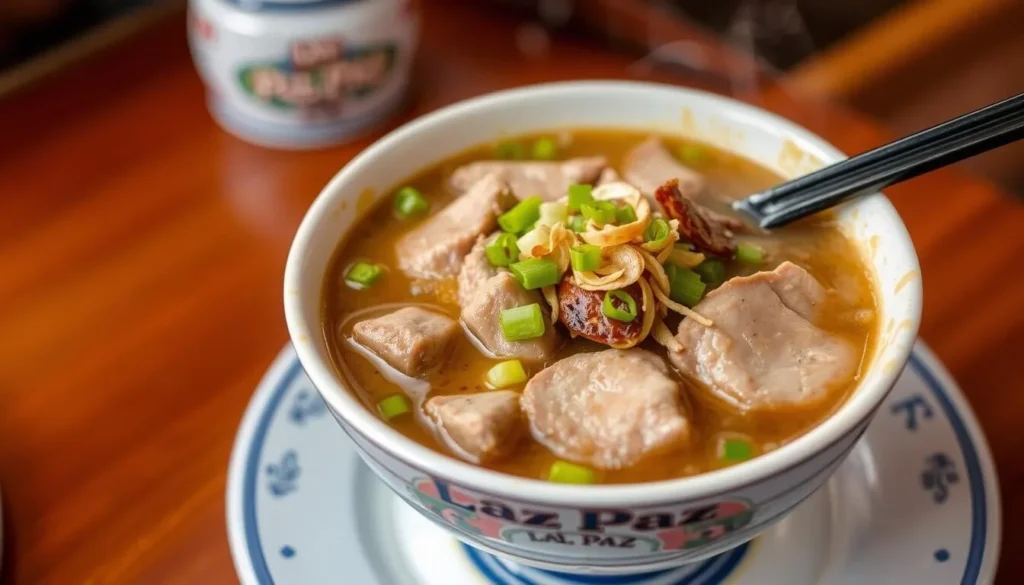
Pancit Molo: The Filipino Wonton Soup
Pancit Molo offers a completely different soup experience—despite its name suggesting noodles (“pancit”), this dish actually features delicate meat-filled dumplings in a flavorful broth, showcasing the Chinese influences on Ilonggo cuisine. Originating in the town of Molo, this flavorful soup reflects the blending of local and Chinese culinary influences.
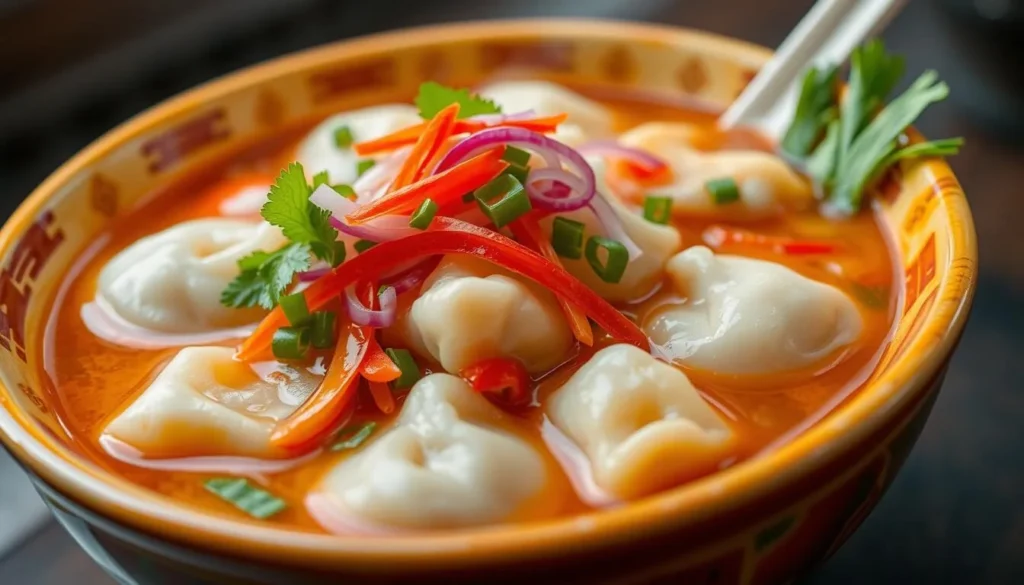
Fresh Seafood at Tatoy’s Manokan
A day of culinary exploration in Iloilo City should include a visit to Tatoy’s Manokan, a restaurant that began as a humble food stall and has grown into an institution famous for its perfectly grilled seafood and native chicken. The fresh seafood at Tatoy’s is sourced daily from local waters, ensuring you get the freshest possible dining experience—many tourists consider this a highlight of their Panay Island visit.
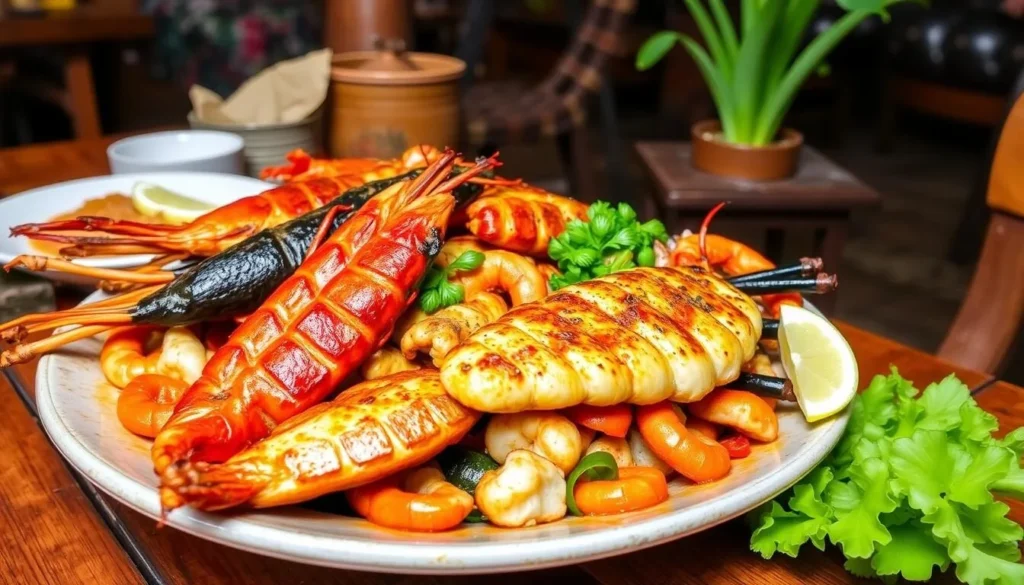
Traditional Coffee Experience at Madge Café
Madge Café in the La Paz Public Market offers an authentic traditional coffee experience that has remained largely unchanged since 1951, where your coffee comes in a mug personalized with your name. The café’s unique brewing method using a traditional flavor sieve creates a distinctive taste that has made it a beloved part of Iloilo’s food culture for over 70 years.

Panay Island offers some of the most distinctive culinary experiences in the Philippines, with dishes that have become famous throughout the country. You’ll find that many restaurants in Panay Island offer a variety of regional specialties beyond the famous dishes, giving you the opportunity to explore the full range of Ilonggo cuisine. Food tours have become increasingly popular in Iloilo City, allowing visitors to sample multiple specialties in one day while learning about the cultural and historical significance of each dish.
Panay Island, Philippines: Best Things to Do for Nature Lovers
Nature enthusiasts will find Panay Island to be a paradise, with its unique blend of spiritual, recreational, and natural attractions. The island offers a diverse range of outdoor experiences that cater to different interests and preferences.
Garin Farm: Recreation, Spirituality, and Agriculture
Garin Farm, located in the town of San Joaquin, is a unique inland resort in Iloilo province that combines recreation, spirituality, and agriculture all in one. Here, you can enjoy a variety of outdoor activities like kayaking, swimming, fishing, and zip-lining. The highlight of Garin Farm is its pilgrimage site, where life-sized dioramas depict nine biblical scenes, including Noah’s Ark and the Garden of Eden.

To reach the iconic white cross atop a hill, prepare to climb a 456-step staircase. At the summit, a serene spot for reflection and prayer awaits, along with the entrance to the Divine Mercy Dark Meditation Tunnel. This symbolic tunnel represents life’s challenges, guiding you toward the “Heaven On Earth” section—an all-white, radiant scene symbolizing the peace and purity of ascension.
Sicogon Island: Pristine Beaches and Hiking
Sicogon Island, known for its resort hotspot in the 1970s and 80s, continues to be a stunning getaway destination in Iloilo province. With its uniquely toned yellow-orange sands, lush forests, and vibrant marine life, Sicogon Island offers an enticing escape for beachgoers and nature lovers.
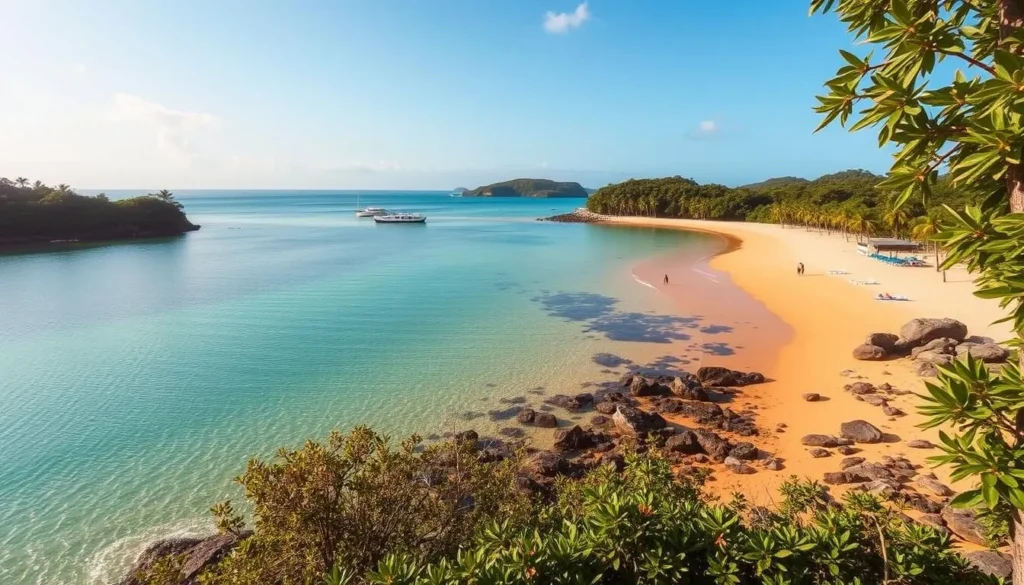
The island’s Barangay Buaya Beach, shaded by tall coconut trees and nipa huts, is an ideal spot for swimming and unwinding in a peaceful tropical setting. Adventurous visitors can take a short boat trip to Tumaguin Island nearby, which is renowned for its snorkeling spots and beautiful coral reefs.
Iloilo River Esplanade: Urban Nature Retreat
The Iloilo River Esplanade walkway is a beautiful urban retreat designed to promote both ecological awareness and an active lifestyle. This scenic riverside walkway spans from Diversion Road to Carpenter’s Bridge, bridging the Molo and Mandurriao neighborhoods.
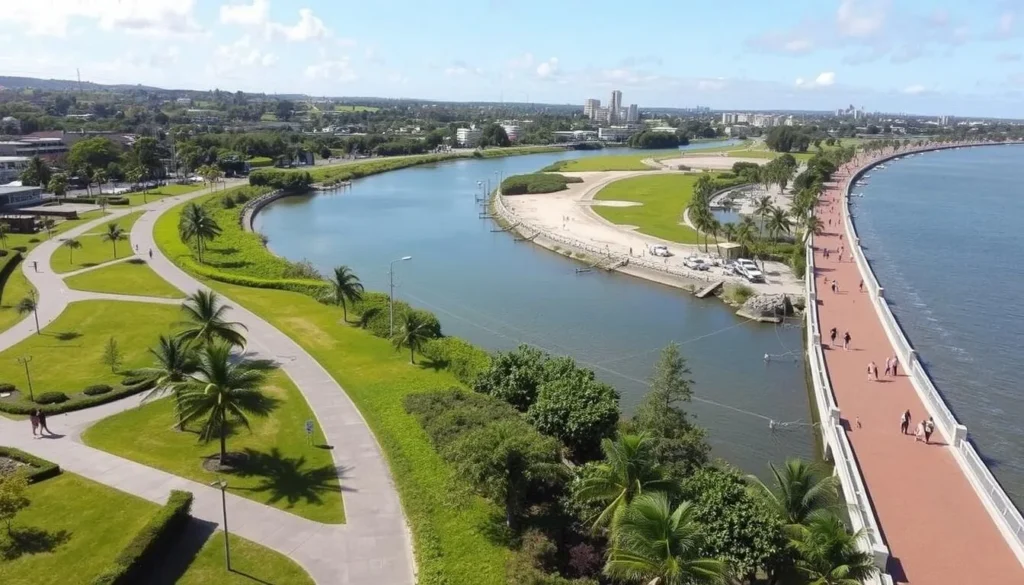
It’s a perfect spot for jogging, walking, or simply taking in the peaceful views of the Iloilo River, which reflects the city’s dedication to sustainable urban development. With its well-manicured paths, benches, and observation decks, the Esplanade has become a favorite gathering spot for locals and tourists alike.
Panay Island offers nature lovers an incredible variety of outdoor experiences, from spiritual pilgrimages to pristine beaches and urban green spaces. Whether you’re looking for adventure, relaxation, or spiritual growth, Panay Island has something to offer.
Shopping and Souvenirs in Panay
Shopping on Panay Island is a delightful experience, with numerous places to find unique souvenirs and local products. Whether you’re looking for traditional handicrafts, local delicacies, or heritage-inspired items, Panay Island has something to offer.
Biscocho Haus: Sweet Treats to Take Home
Biscocho Haus is a must-visit destination for those seeking the perfect pasalubong (souvenir) from Iloilo Province. Renowned for its signature biscocho, a twice-baked bread topped with butter and sugar, this treat has been a favorite for over four decades. Located on Lopez Jaena Street near Jaro Square in Iloilo City, Biscocho Haus operates daily from 6 AM to 8 PM.
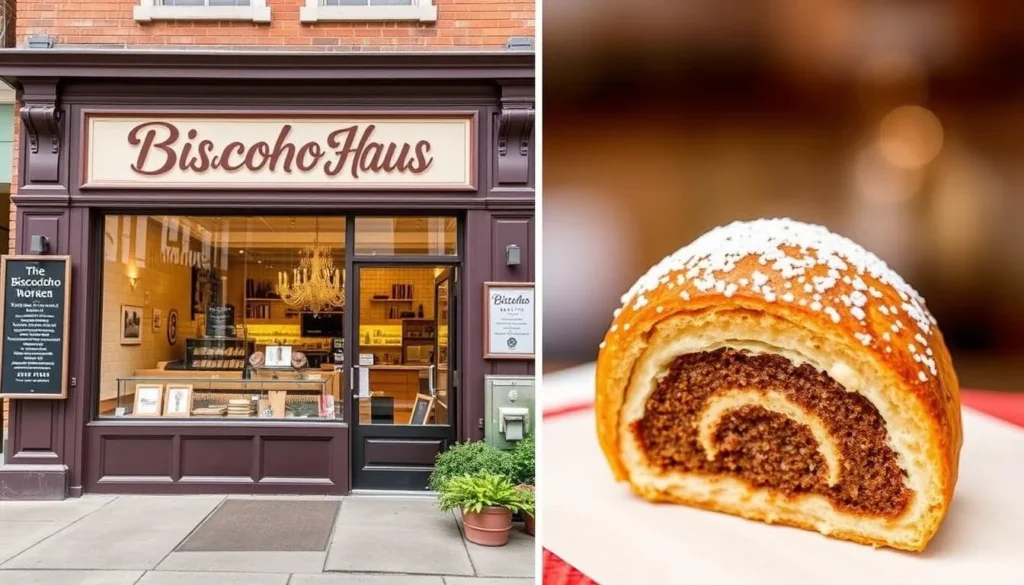
Beyond their namesake product, Biscocho Haus offers a variety of local treats including butterscotch bars, fruit tarts, banana chips, muscovado bread, and tablea (chocolate tablets). These options make it an ideal place to find something that captures the flavors of Iloilo Province.
Molo Mansion: Heritage Shopping
The Yusay-Consing Mansion, better known as Molo Mansion, is a beautifully restored colonial house that now serves as a popular heritage site and shopping center. Built in the 1920s, it showcases Filipino colonial architecture and is home to stores offering high-quality Ilonggo-inspired souvenirs and clothing.
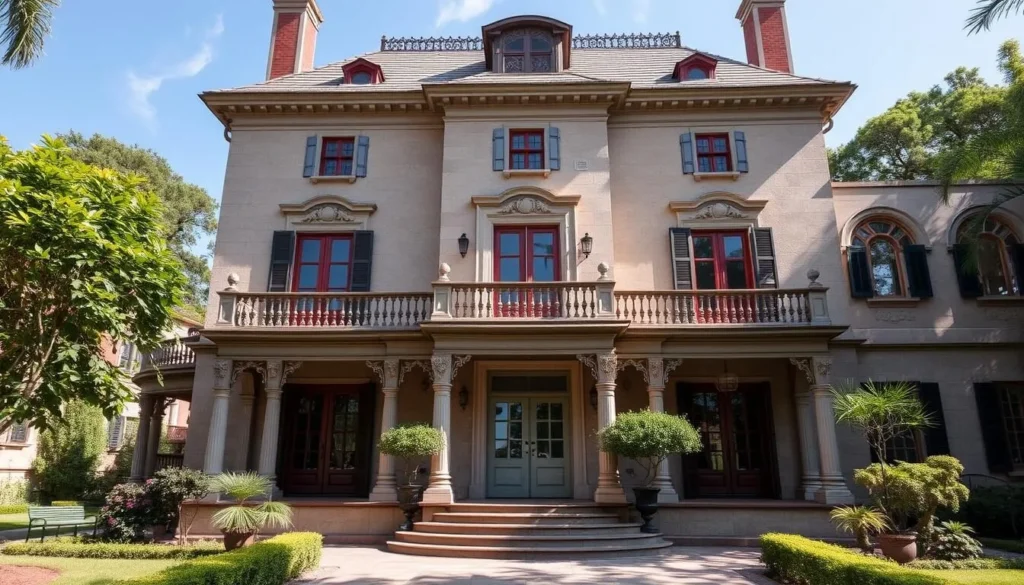
Located just a short walk from Molo Church, Molo Mansion combines heritage appreciation with shopping. The entrance is free, allowing visitors to experience this piece of Iloilo’s history while browsing for souvenirs. The mansion also features a charming café serving traditional Ilonggo dishes and unique beverages.
Local Handicrafts and Products
Panay Island is rich in local handicrafts and products that make perfect souvenirs. Handwoven textiles, particularly hablon (a traditional Ilonggo weaving technique), can be purchased as scarves, table runners, or clothing. The island’s artisans have creatively incorporated local materials into contemporary designs, offering stylish souvenirs that connect to the island’s cultural heritage.
Food products like dried mangoes, coffee beans from local plantations, and artisanal vinegars are also recommended as practical souvenirs that allow you to experience the flavors of Panay Island long after your trip.
Nightlife and Entertainment in Iloilo City
Experience the best of Iloilo City’s nightlife, where dining and entertainment options abound. As the sun sets, the city comes alive with a variety of choices for both locals and tourists.
Smallville: The Entertainment District

Smallville is Iloilo City’s vibrant nightlife hub, offering a wide range of dining and entertainment options. Located along Diversion Road, it has evolved from a small complex into a sprawling entertainment district. You’ll find trendy restaurants and bars serving local, fusion, and international dishes. Enjoy a drink at some of the city’s hippest bars, dance the night away, or catch a live band to experience the best of Iloilo City’s nightlife.
Some of the key attractions in Smallville include its numerous restaurants, bars, and clubs that cater to both locals and visitors. The area is conveniently connected to the Iloilo River Esplanade and is easily accessible from many nearby hotels, making it a convenient place to end your day of touring the city.
Many travelers appreciate that Smallville provides a safer, more laid-back nightlife experience compared to other tourist destinations in the Philippines. The district comes alive after sunset, with outdoor seating areas where you can enjoy drinks while people-watching or taking in views of the illuminated cityscape.
Live Music and Cultural Performances
Iloilo City is not just about its nightlife; it’s also a hub for cultural performances. Many establishments in Smallville feature live music performances, ranging from cover bands to artists showcasing traditional Ilonggo music. This offers a glimpse into the local culture through its musical expressions.
Cultural performances are regularly scheduled at various venues throughout Iloilo City, particularly during festival seasons. This gives tourists an opportunity to experience traditional dances and music, enriching their visit to the city.
The food parks within the Smallville area have become popular gathering places, offering a variety of cuisines in casual, open-air settings. This is perfect for sampling different dishes in one place, continuing your culinary exploration into the evening hours.
Day Trips from Iloilo City
With Iloilo City as your base, you can embark on memorable day trips to discover the charm of Panay Island. The city’s strategic location allows you to explore various attractions without changing your accommodations.
Guimaras Island: Mango Paradise
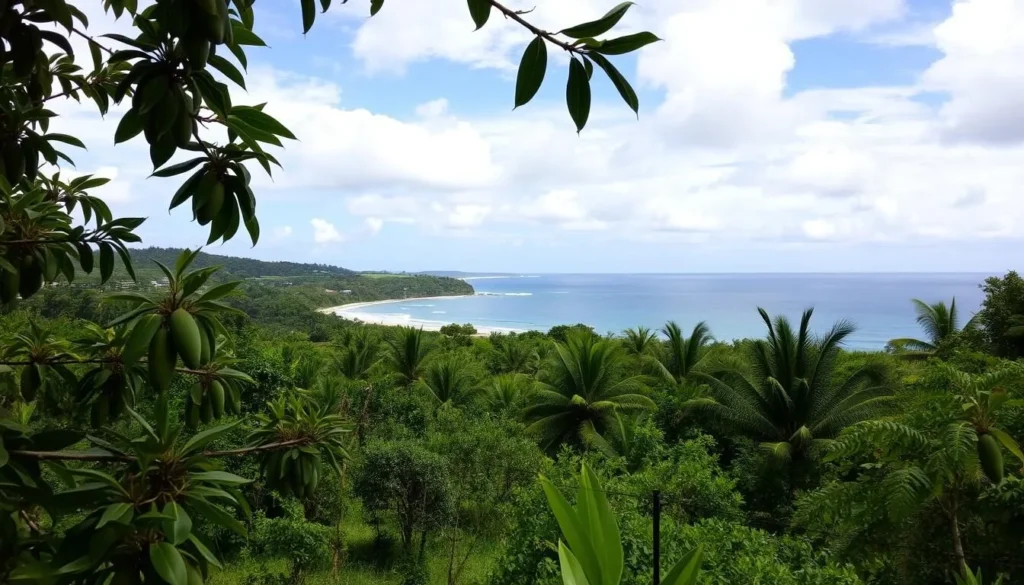
Guimaras Island, just a 15-minute boat ride from Iloilo City, is renowned for its sweet mangoes. You can tour mango plantations, sample local mango products, and relax on pristine beaches like Alubihod and Raymen Beach. The boat ride itself is an experience, offering a glimpse into the daily commute of locals between the islands.
San Joaquin: Historic Church and Garin Farm
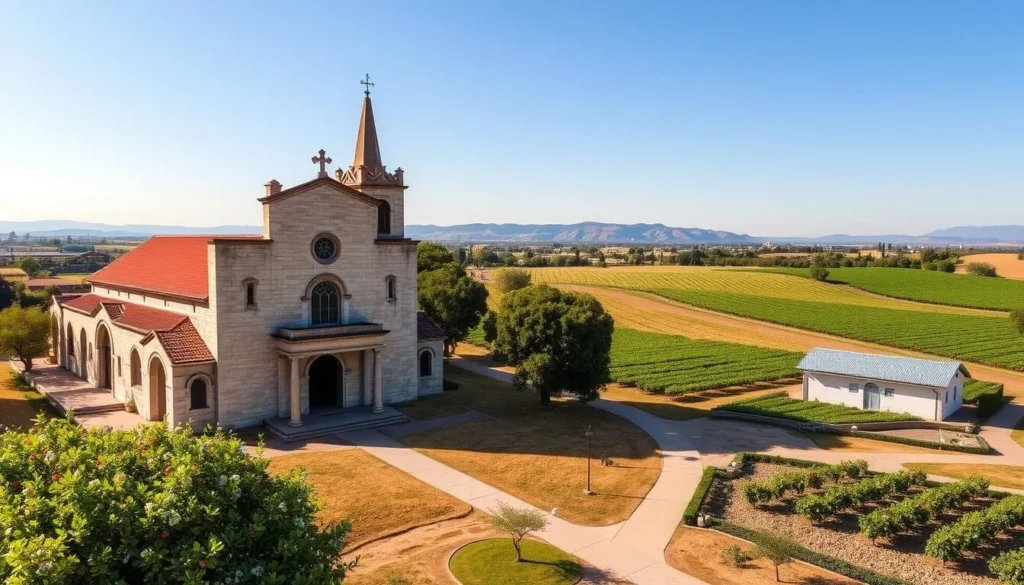
San Joaquin, about an hour’s drive from Iloilo City, boasts a unique historic church with a military-themed façade. You can visit this church and combine it with a trip to Garin Farm, making for a day that balances cultural and natural attractions.
Antique Province: Off-the-Beaten-Path Adventures
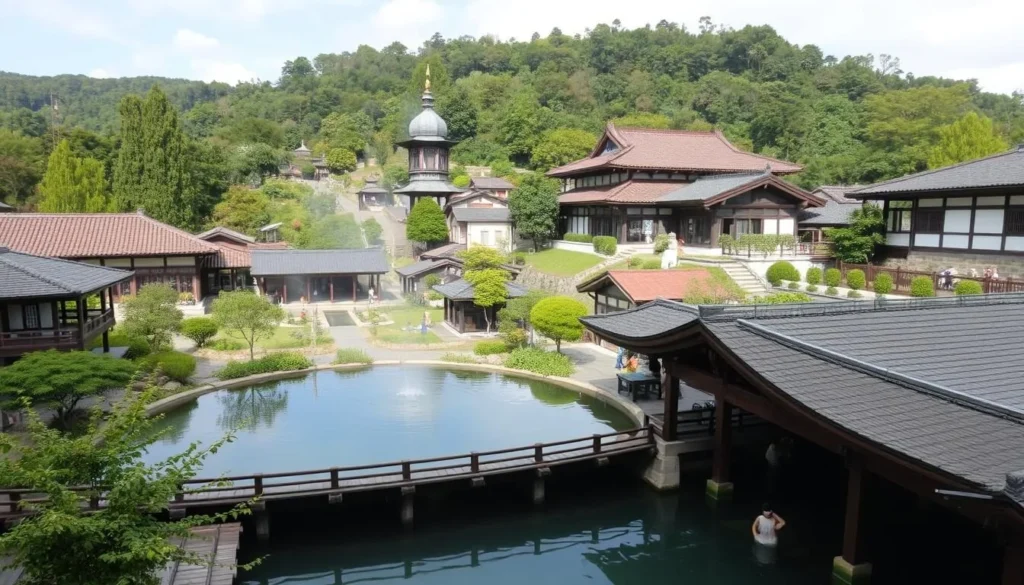
Antique Province, located on the western part of Panay Island, offers off-the-beaten-path adventures, including hot springs, waterfalls, and the unique Kawa Hot Bath experience. The beaches here are less crowded, providing an authentic experience for travelers seeking to escape typical tourist sites.
These day trips from Iloilo City not only showcase the diversity of Panay Island but also offer a chance to experience the local culture, food, and natural beauty. Many tour operators provide guided tours, making it easier for you to enjoy the scenic views without worrying about the logistics.
Where to Stay in Panay Island
From luxury resorts with breathtaking views to charming homestays that offer a glimpse into local life, Panay Island’s accommodations are as varied as they are inviting. Whether you’re looking to relax on pristine beaches, explore the vibrant city life of Iloilo, or experience the island’s natural beauty, there’s a perfect place to stay for you.
Luxury Accommodations
For those seeking a luxurious getaway, Panay Island offers high-end resorts and hotels that promise a lavish experience. These luxury accommodations, often located in prime spots like Iloilo City or near secluded beaches, come with premium amenities, including infinity pools, world-class restaurants, and exceptional service.

Mid-Range Hotels and Resorts
Travelers on a moderate budget will find a variety of mid-range hotels and resorts on Panay Island that offer excellent value. These accommodations provide comfortable rooms, good service, and often include amenities like swimming pools and on-site dining options, making them ideal for exploring the island.
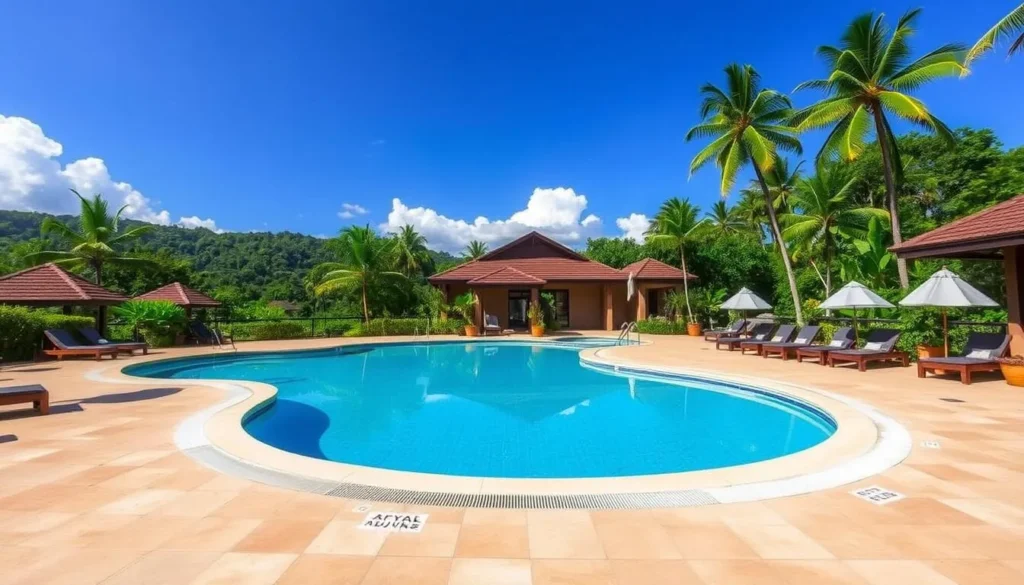
Budget-Friendly Options
For the budget-conscious traveler, Panay Island has plenty of affordable accommodations, including hostels, pension houses, and budget hotels. These options offer clean, basic rooms and essential amenities like free Wi-Fi, ensuring a comfortable stay without breaking the bank.
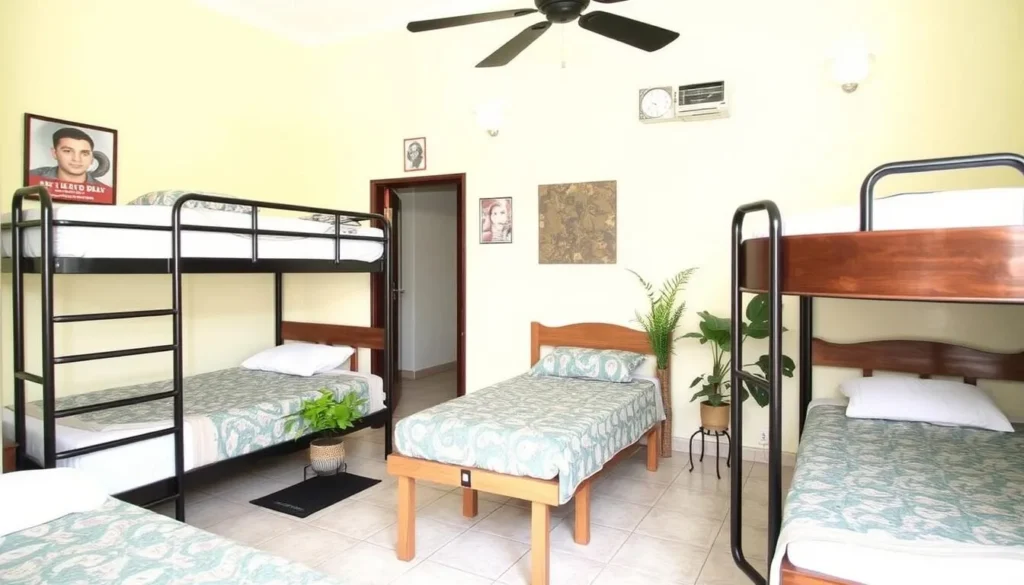
Unique Stays and Homestays
For a truly authentic experience, consider staying in a homestay or a heritage house converted into a boutique hotel. These unique accommodations allow you to immerse yourself in the local culture, enjoy home-cooked meals, and gain insights into the island’s way of life.

When choosing your place to stay on Panay Island, consider not just the cost but also the location and the entrance fees or transportation costs to your desired attractions. Sometimes, opting for a slightly more expensive but centrally located resort can save you money and time in the long run.
Getting Around Panay Island
Navigating Panay Island is an adventure in itself, with various transportation options available.
Transportation Options in Iloilo City
In Iloilo City, you’ll experience the vibrant culture through its public transportation. The iconic jeepneys, converted military jeeps, are not only a practical way to get around but also a cultural experience. You can also use trisikads (cycle rickshaws) for short distances, perfect for exploring the historic downtown area. For a more comfortable ride, taxis and ride-hailing services like Grab are readily available.
Traveling Between Towns and Provinces
When traveling between towns and provinces on Panay Island, Ceres buses are the primary mode of transportation, connecting major destinations with regular departures. For more remote areas, you may need to arrange boat transportation, ranging from scheduled ferry services to chartered outrigger boats. Locals often use multicabs and tricycles for shorter trips, offering an adventurous experience.
Renting Vehicles and Hiring Drivers
For flexibility, many tourists choose to rent motorcycles or scooters, ideal for experienced riders. Alternatively, hiring a driver for the day or booking an organized tour that includes transportation can provide a stress-free experience, especially when visiting multiple attractions across the island.
Travel times can vary significantly due to road conditions and traffic. It’s advisable to allow buffer time in your itinerary to account for any unexpected delays.
Best Time to Visit and Seasonal Activities
Understanding the seasonal rhythms of Panay Island is key to planning a trip that meets your expectations. The island offers a diverse range of experiences throughout the year, from beach activities to cultural festivals.
Weather Patterns in Panay Island
Panay Island experiences two main seasons: the dry season from November to May and the rainy season from June to October. The dry season is generally considered the best time for beach activities and island hopping. During this period, the weather is typically sunny, making it ideal for outdoor adventures.
The dry season, particularly from December to February, offers the most pleasant weather with cooler temperatures. This makes it perfect for exploring outdoor attractions and enjoying morning hikes without the excessive heat.
Festival Season: Dinagyang and More
January is a particularly exciting time to visit Iloilo City as it hosts the famous Dinagyang Festival—one of the Philippines’ most spectacular cultural celebrations. The festival features vibrant street dancing, music, and religious processions, offering an immersive cultural experience for visitors.
Other notable festivals include Kalibo’s Ati-Atihan in January and Roxas City’s Sinadya sa Halaran in December. These events provide authentic cultural experiences, showcasing the rich heritage of Panay Island.
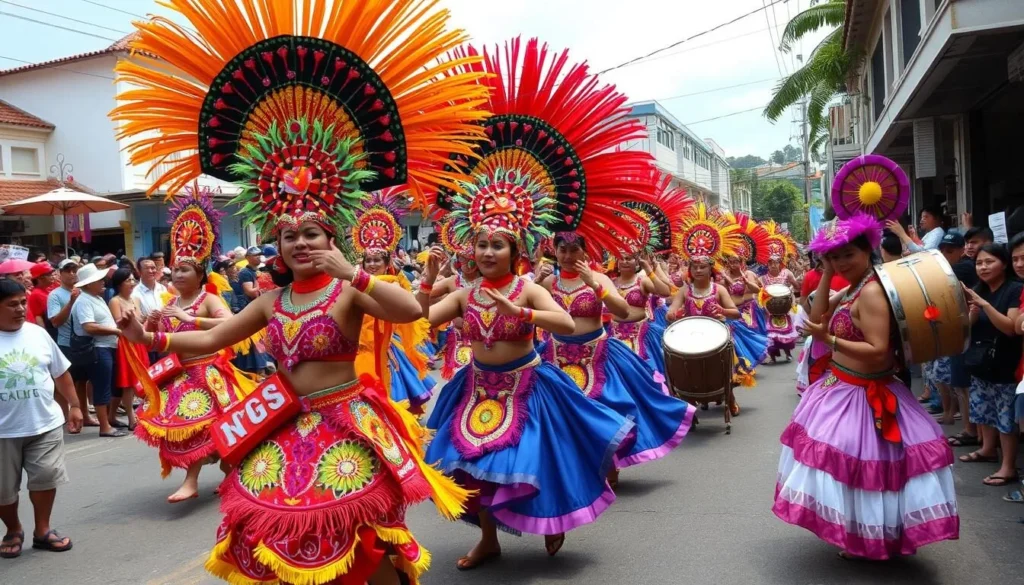
Off-Season Travel Benefits
The rainy season brings lush, green landscapes and fewer tourists, which can mean lower prices for resorts and accommodations. This makes it an attractive option for budget-conscious travelers. Even during the rainy season, Panay Island often experiences intermittent rain rather than continuous downpours, still allowing for beach time and sightseeing.
Seafood is generally abundant year-round, but some local fishermen say the best catches come during the transition months between seasons (May and November), making these good times for culinary-focused trips.
Planning Your Itinerary
Panay Island, with its rich history, vibrant culture, and stunning landscapes, demands a well-thought-out itinerary to uncover its secrets. Whether you’re drawn to the urban charm of Iloilo City, the natural beauty of Islas de Gigantes, or the cultural heritage of the island’s historic sites, a balanced itinerary is key to a fulfilling experience.
3-Day Iloilo City Itinerary
A 3-day itinerary in Iloilo City is an excellent way to explore the urban highlights of Panay Island. Day one can be dedicated to visiting historical churches such as Molo Church and Jaro Cathedral, both renowned for their architectural beauty and historical significance. On day two, delve into the city’s heritage houses and sample the local cuisine, including the famous La Paz Batchoy. Day three is perfect for a leisurely walk along the Iloilo River Esplanade and exploring Smallville, the city’s entertainment district.
- Morning visits to churches and heritage houses are recommended to avoid the heat and crowds.
- Take time to appreciate the local cuisine and drinks.
- Explore the city’s lesser-known areas for unique experiences.
Week-Long Panay Island Exploration
For a more comprehensive experience, consider a week-long exploration of Panay Island. Spend 3-4 days immersing yourself in Iloilo City and its surroundings, then allocate 2-3 days to explore either Antique’s natural wonders, Capiz’s seafood adventures, or Aklan’s beaches and cultural sites. Island hopping in Islas de Gigantes is a must, with its breathtaking views and pristine beaches making it a highlight of any trip to Panay.
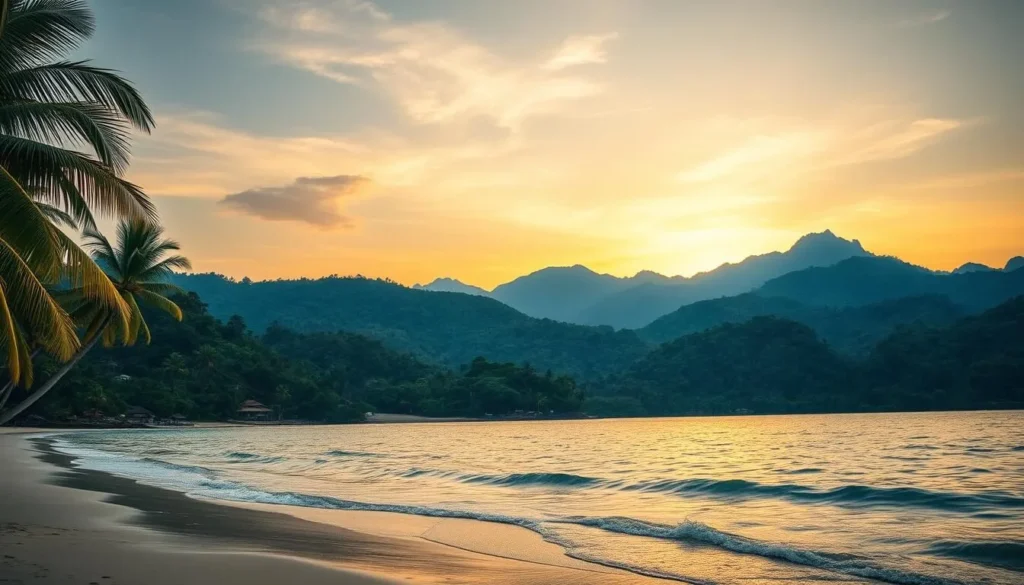
- Plan your island hopping trips according to travel times and weather conditions.
- Be flexible with your itinerary to accommodate unexpected discoveries.
- Utilize local tour operators to customize your trip according to your interests.
Combining Panay with Other Visayan Islands
Panay Island is part of the Visayan group of islands, making it easy to combine with other destinations like Negros, Cebu, or Boracay. Efficient boat connections and tour packages make it possible to experience multiple islands in one trip, offering a diverse and enriching travel experience. Consider including these destinations in your itinerary for a more comprehensive Visayan adventure.
- Research boat schedules and tour packages in advance.
- Plan your trip during the dry season for the best experience.
- Be open to adjusting your plans based on local advice and weather conditions.
Practical Travel Tips for Panay Island
To make the most of your trip to Panay Island, it’s essential to be aware of some practical travel tips. Understanding these considerations will help you avoid common pitfalls and enhance your overall experience.
Budget Considerations
Panay Island offers excellent value compared to more touristy destinations in the Philippines. You can find comfortable accommodations starting around $30-40 per night, and local meals typically cost between $3-5 in most restaurants. When visiting churches like Jaro Cathedral and Molo Church, remember that entrance is free, but donations for maintenance are appreciated.
| Expense | Average Cost |
|---|---|
| Accommodation per night | $30-40 |
| Local meal | $3-5 |
| Island hopping tour | $20-50 |
Safety and Health Information
Safety on Panay Island is generally good, with Iloilo City often cited as one of the safest cities in the Philippines. However, it’s still advisable to take standard precautions like securing your valuables and being aware of your surroundings. For health, it’s recommended to drink bottled water, carry basic medications, and apply mosquito repellent, especially during the rainy season or when visiting rural areas and beaches.
Cultural Etiquette and Local Customs
Understanding cultural etiquette will enhance your experience on Panay Island. The Ilonggos are known for their gentleness and hospitality, and they appreciate visitors who show respect for local customs. When visiting heritage houses or private museums, modest dress is appreciated, and in some places, you may be asked to remove your shoes before entering.
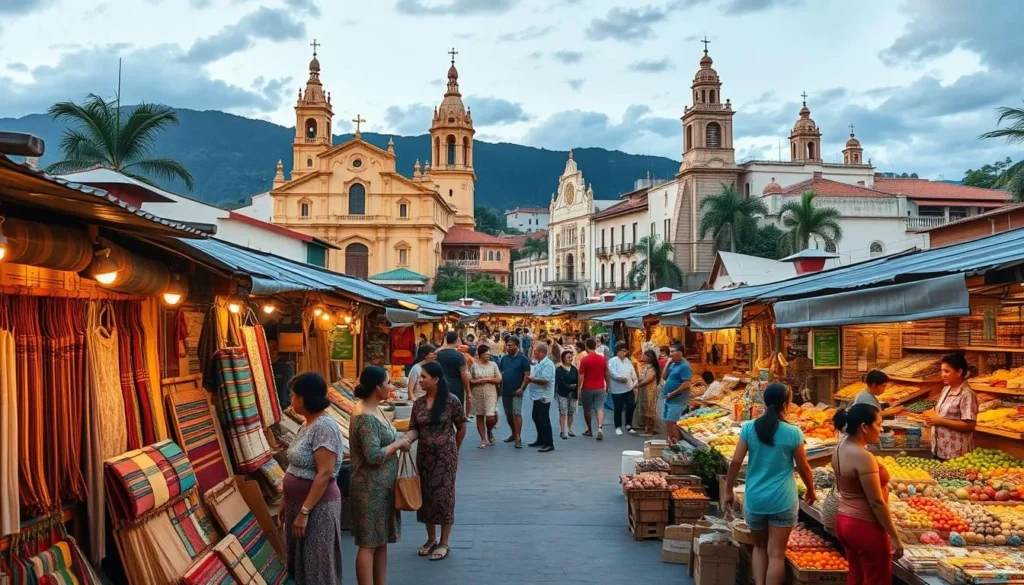
Connectivity and Communication
Mobile connectivity is generally good in urban areas and tourist destinations on Panay Island. Major telecommunications providers offer affordable prepaid SIM cards with data packages that can be purchased at the airport or in convenience stores. Most hotels, restaurants, and cafes in Iloilo City offer free Wi-Fi, though connection speeds may vary.
By being aware of these practical travel tips, you can have a more enjoyable and stress-free trip to Panay Island. Whether you’re exploring the historical churches, enjoying the beautiful beaches, or experiencing the local culture, being prepared will make all the difference.
Sustainable Tourism in Panay Island
With its stunning landscapes and vibrant communities, Panay Island is embracing sustainable tourism to preserve its treasures. As you explore this beautiful destination, you can contribute to its conservation by making informed choices.
Eco-Friendly Practices
Many resorts and tour operators on Panay Island are adopting eco-friendly practices, including waste reduction, energy conservation, and water-saving initiatives. When choosing where to stay or which tours to take, look for establishments that proudly display their sustainability commitments. For example, some resorts are using renewable energy sources and implementing recycling programs. You can also make a positive impact by reducing your own waste and conserving water during your stay.
Eco-friendly accommodations are becoming increasingly popular, and you can support this trend by choosing hotels and resorts that prioritize sustainability. Additionally, be mindful of your energy consumption and try to reduce your carbon footprint by using public transportation or walking whenever possible.
Supporting Local Communities
Supporting local communities is crucial for preserving the cultural heritage and traditional way of life on Panay Island. You can make a positive impact by choosing locally-owned accommodations, eating at family-run restaurants, and purchasing souvenirs made by local artisans. This not only benefits the local economy but also provides you with a more authentic experience of the island’s culture.
When visiting historic sites like Jaro Cathedral and Molo Church, take the time to learn about their historical and cultural significance. This enriches your travel experience and helps support the preservation of these important landmarks. You can also consider participating in community-based tourism activities, such as village visits or cooking classes with local families, which provide direct economic benefits to the communities.
Responsible Travel Guidelines
When traveling to sensitive sites like Islas de Gigantes, follow designated paths and respect “no-touch” policies for artifacts and natural formations. Choose boat tour operators that follow responsible marine tourism guidelines, including proper waste disposal and no-touch coral policies. Be mindful of your seafood choices and avoid consuming endangered species or those caught using destructive fishing methods.
By being a responsible traveler and respecting local customs and traditions, you can help preserve the beauty and culture of Panay Island for future generations. Consider the impact of your actions and make choices that support the local environment and community.
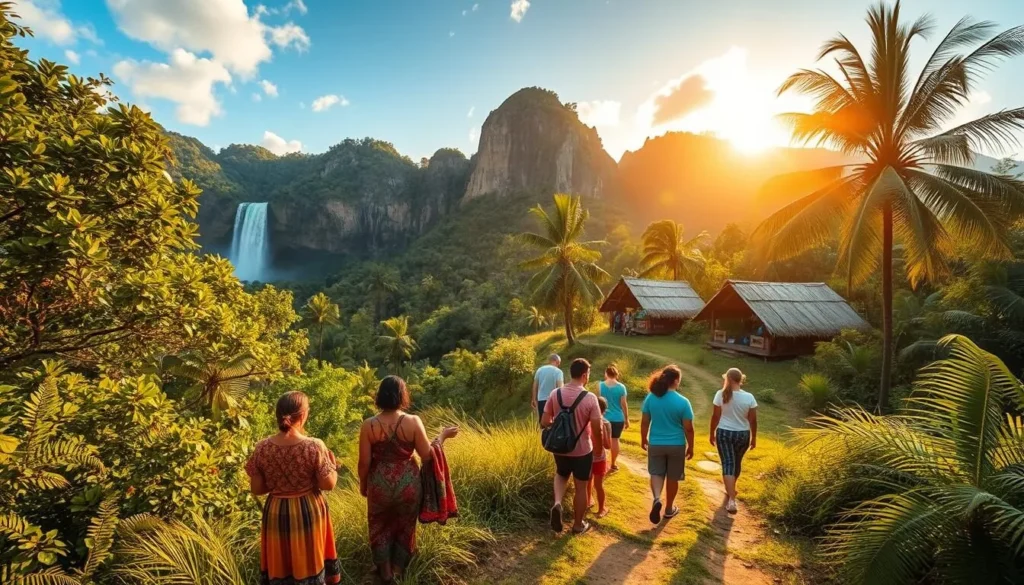
Conclusion: The Unforgettable Charm of Panay Island
The island of Panay is a treasure trove of natural beauty, rich history, and authentic cultural experiences. As you explore this enchanting destination, you’ll discover a perfect blend of pristine beaches and historical landmarks. The genuine warmth and hospitality of the locals enhance every aspect of your trip, whether you’re sampling traditional dishes or relaxing by the crystal-clear waters. Panay Island strikes a balance between development and preservation, offering modern comforts while maintaining its authentic character. Visitors will find that the most memorable experiences come from unexpected moments. Whether you spent a day or a week exploring the island, Panay’s unforgettable charm will leave you planning your return trip.
